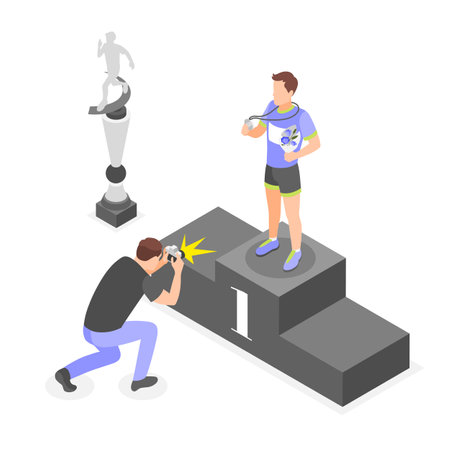Introduction to Assistive Technology in Rehabilitation
Assistive technology has become an integral part of modern rehabilitation, transforming the way individuals with disabilities or long-term health conditions regain independence and improve their quality of life. At its core, assistive technology encompasses a broad range of devices, software, and equipment designed to support individuals in overcoming physical, cognitive, or sensory challenges. In recent years, the UK has witnessed significant advancements in this field, driven by both technological innovation and a strong commitment to inclusive healthcare. From mobility aids and communication devices to cutting-edge digital platforms and smart home solutions, assistive technology is redefining what is possible in rehabilitation settings across the country. As the demand for personalised care grows within the NHS and private sectors alike, understanding the evolving role of these technologies is essential for healthcare professionals and service users. This article explores how assistive technology is being embraced within the UK’s rehabilitation landscape, highlighting key developments and their impact on patient outcomes.
2. Current Landscape of Assistive Technology in the UK
The United Kingdom has made significant strides in integrating assistive technology (AT) into modern rehabilitation, both within the NHS and across the private sector. The accessibility and availability of these technologies are continually evolving, driven by advances in innovation, policy support, and a growing recognition of their impact on patient independence and quality of life.
Availability Across Sectors
Assistive technology is now widely available through the NHS, offering devices such as mobility aids, communication tools, and sensory support equipment. Private providers complement these offerings with more specialised or cutting-edge solutions, often catering to specific needs or preferences not fully covered by public services.
Overview: NHS vs Private Sector Provision
| Aspect | NHS Provision | Private Sector Provision |
|---|---|---|
| Range of Devices | Standardised core products Essential mobility and daily living aids |
Broader selection Customised or advanced options |
| Accessibility | No direct cost to patient Requires referral and assessment |
Direct purchase or insurance cover No referral needed |
| Waiting Times | May experience delays due to demand and funding limits | Typically shorter; dependent on provider’s stock and service model |
| Follow-up & Support | Ongoing NHS support for maintenance and training | Varies; often includes tailored aftercare packages |
User Experience and Accessibility Challenges
While many patients benefit from timely access to appropriate assistive technology, there remain challenges. Geographic disparities can affect device availability, especially in rural areas. Additionally, awareness of available AT solutions among clinicians and patients is an ongoing concern. Recent NHS initiatives focus on digital inclusion, aiming to bridge gaps and ensure equitable access to both traditional aids and emerging smart technologies.

3. Key Innovations and Their Impact on Patient Outcomes
In recent years, the UK has seen remarkable progress in assistive technology, with innovations that are reshaping the rehabilitation landscape. Among the most notable advancements are smart prosthetics, which harness microprocessor technology and advanced materials to provide more natural movement and adaptability. For patients who have experienced limb loss or impairment, these devices can dramatically improve mobility and confidence, supporting a return to everyday activities and even employment.
Another area of significant development is communication aids, particularly for individuals with conditions such as motor neurone disease, cerebral palsy, or following a stroke. Modern speech-generating devices and eye-tracking systems enable users to communicate more easily with loved ones and caregivers, reducing social isolation and enhancing their sense of autonomy.
These technological breakthroughs are not only about convenience—they have a profound impact on patient outcomes. Enhanced independence leads to improved mental wellbeing, while greater participation in family and community life fosters overall quality of life. In the UK context, where holistic and person-centred care is highly valued within the NHS and private sectors alike, such outcomes align closely with national healthcare priorities.
Looking forward, continued collaboration between clinicians, engineers, and patients will be key to ensuring that assistive technology remains responsive to real-world needs. By keeping innovation patient-focused, we can maximise the positive impact on rehabilitation experiences across the country.
4. Challenges and Barriers to Implementation
While assistive technology has the potential to revolutionise rehabilitation in the UK, several challenges continue to hinder its widespread adoption. Understanding these barriers is essential for healthcare professionals, commissioners, and policymakers aiming to improve patient outcomes through modern solutions.
Funding Constraints
One of the most persistent issues across NHS trusts and local authorities is securing adequate funding for assistive technology. Although there is growing recognition of its long-term cost-effectiveness, upfront investment remains a significant hurdle, particularly in areas with stretched budgets. For example, some community rehabilitation teams report delays in accessing essential devices due to lengthy procurement processes or limited funding streams.
Training and Professional Development
The rapid evolution of technology means that staff require ongoing training to stay up-to-date with the latest developments. However, many frontline clinicians feel underprepared to recommend or support advanced assistive devices without additional guidance. A 2023 survey by a leading UK rehabilitation charity found that over half of respondents identified a lack of specialist training as a key barrier to effective implementation.
Patient Adoption and Acceptance
Even when assistive technologies are available, patient uptake is not guaranteed. Factors influencing adoption include digital literacy, perceived stigma, and concerns about complexity or reliability. For instance, older adults recovering from stroke may feel overwhelmed by app-based rehabilitation tools, preferring more familiar methods unless supported by tailored education and encouragement.
Summary of Key Barriers in UK Rehabilitation Services
| Challenge | Description | Example from UK Practice |
|---|---|---|
| Funding | Limited budgets slow procurement and reduce access to new technologies | NHS trust unable to purchase latest mobility aids due to financial constraints |
| Training | Lack of ongoing professional development leads to underutilisation | Rehabilitation staff report insufficient knowledge of digital platforms |
| Patient Adoption | Reluctance or difficulty in using new devices due to various factors | Elderly patients hesitant to use tele-rehabilitation apps without support |
Tackling these barriers requires collaborative efforts between healthcare providers, technology developers, patients, and policymakers. By addressing funding gaps, investing in targeted training programmes, and offering personalised support for patients, the UK can pave the way for more inclusive and effective rehabilitation services powered by assistive technology.
5. Patient-Centred Approaches in Technology Integration
Across the UK, the integration of assistive technology within rehabilitation services is increasingly shaped by patient-centred principles. British practitioners recognise that no two patients are alike; therefore, involving individuals in the selection and adaptation of assistive technologies is essential for achieving positive outcomes. Clinicians and occupational therapists routinely engage patients in meaningful conversations to understand their daily routines, personal preferences, and specific rehabilitation goals. This collaborative approach ensures that technology solutions are not only clinically appropriate but also fit seamlessly into the patient’s lifestyle.
Many NHS trusts and private providers employ shared decision-making models, where patients are encouraged to voice their concerns, ask questions, and participate actively in trialling different devices. For example, some clinics offer ‘technology taster’ sessions or home trials, allowing individuals to experience various options in familiar settings before making a commitment. Practitioners may use standardised assessment tools alongside informal interviews to ensure that choices reflect both medical needs and practical realities—such as living environment, mobility patterns, and even cultural factors unique to British society.
This bespoke approach extends beyond initial device selection. UK rehabilitation teams often provide ongoing support, including user training and regular follow-up appointments to monitor progress and make adjustments as required. By doing so, they empower patients to develop confidence and autonomy in managing their own care. Ultimately, this patient-centred ethos fosters greater satisfaction, promotes adherence to rehabilitation programmes, and enhances overall quality of life for those using assistive technology throughout the United Kingdom.
6. Future Directions and Recommendations
As we look to the future of assistive technology (AT) in rehabilitation across the UK, it is clear that ongoing innovation and thoughtful policy development will be essential. The landscape of AT is rapidly evolving, with trends such as artificial intelligence, advanced robotics, and personalised digital health solutions promising to reshape the way rehabilitation services are delivered. To fully harness these advancements, several key considerations and recommendations should guide our next steps.
Emerging Trends in Assistive Technology
The integration of smart devices, wearable sensors, and tele-rehabilitation platforms is set to become more widespread. These technologies not only enhance patient engagement but also enable therapists to monitor progress remotely and intervene proactively. Furthermore, developments in machine learning may soon allow for even more tailored interventions, optimising outcomes for individuals with complex needs.
Policy Considerations for Wider Adoption
For the UK to remain at the forefront of modern rehabilitation, robust policies must support equitable access to AT across all regions. This includes addressing funding disparities between NHS trusts, streamlining procurement processes, and ensuring that regulatory frameworks encourage innovation while safeguarding patient safety. Collaboration between government bodies, healthcare providers, and technology developers will be vital in aligning efforts toward shared goals.
Recommendations for Enhancing Uptake and Effectiveness
- Invest in Professional Training: Equip clinicians with up-to-date knowledge and skills to confidently recommend and support the use of new technologies.
- Prioritise User-Centred Design: Involve patients and carers in the design and evaluation of AT solutions to ensure they truly meet everyday needs.
- Promote Public Awareness: Launch national campaigns highlighting the benefits of AT, dispelling myths, and reducing stigma associated with its use.
- Strengthen Research Partnerships: Support collaborative research initiatives that generate robust evidence for the efficacy and cost-effectiveness of emerging AT interventions within diverse UK populations.
A Commitment to Inclusive Innovation
Ultimately, the successful integration of assistive technology into modern rehabilitation requires a commitment to inclusivity and continual improvement. By fostering a culture of innovation—grounded in patient perspectives and underpinned by supportive policy—the UK can ensure that individuals accessing rehabilitation services benefit from the very best that contemporary technology has to offer.


